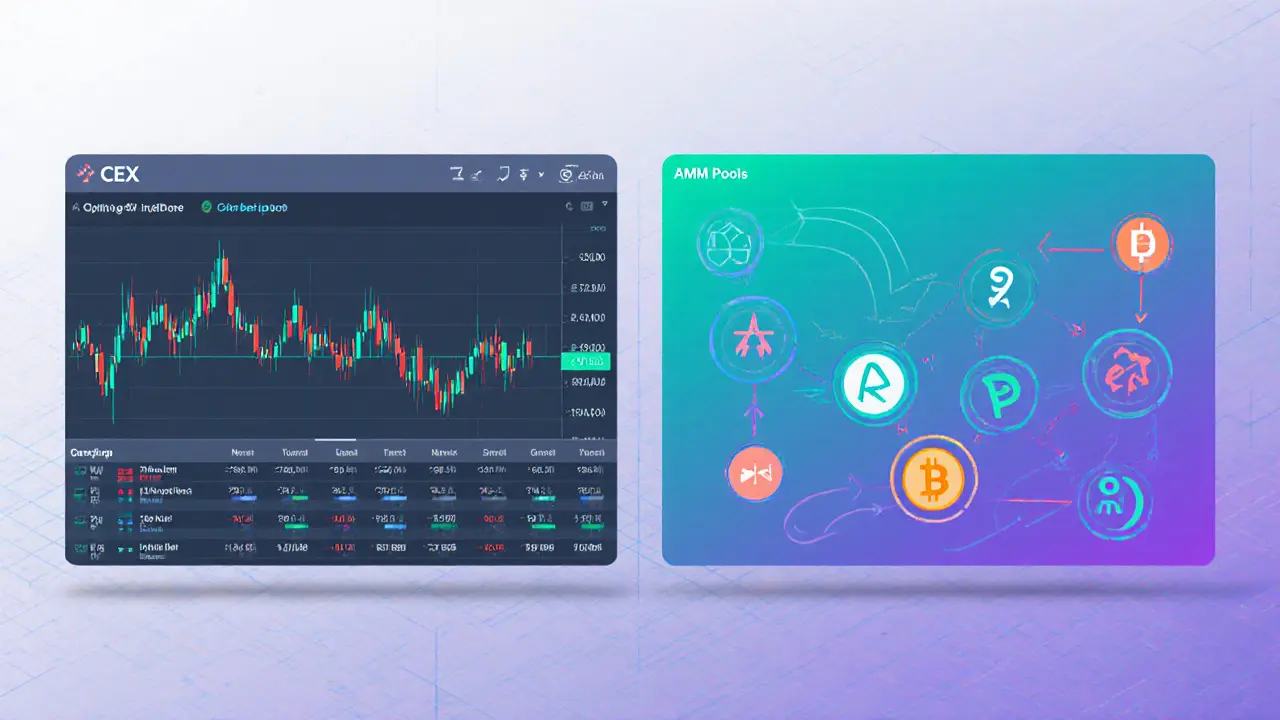Centralized Exchange Liquidity: What It Is and Why It Matters
When dealing with centralized exchange liquidity, the amount of crypto that can be bought or sold on a central platform without moving the price dramatically. It’s also known as CEX depth, and it directly affects how fast a trade fills and how much slippage you see.
How Order Books Build the Liquidity Picture
The order book, a real‑time list of buy and sell orders at different prices is the backbone of liquidity. A deep order book means many orders sit close to the current price, so a sizable trade won’t cause a big swing. In contrast, a thin book leaves gaps that a single order can jump across, inflating spreads. Because centralized exchange liquidity includes the depth of the order book, traders watch the bid‑ask spread as a quick health check.
Market makers are the next piece of the puzzle. A market maker, an entity that continuously posts buy and sell orders to keep the market fluid injects consistent volume, especially in less popular pairs. Their algorithms adjust prices to balance supply and demand, smoothing out spikes that would otherwise erode liquidity. When market makers are active, the order book stays populated, which in turn boosts overall trading volume.
Speaking of volume, trading volume, the total amount of cryptocurrency exchanged over a period is both a cause and a result of good liquidity. High volume attracts more participants, leading to tighter spreads and deeper books. Conversely, low volume can scare off traders, thinning the order book and raising costs. Thus, liquidity, order book depth, market makers, and volume form a feedback loop that defines the trading experience.
Regulators also influence liquidity indirectly. Some jurisdictions require exchanges to maintain minimum capital reserves or disclose order‑book transparency. These rules aim to prevent sudden withdrawals of liquidity that could trigger price crashes. By complying with licensing standards, exchanges reassure market makers and institutional traders that the platform can sustain large trades, keeping the liquidity pipeline steady.
For everyday traders, assessing liquidity comes down to a few practical steps. First, look at the depth chart: how many coins sit within a few percent of the market price? Second, check the spread—smaller spreads usually signal healthy liquidity. Third, scan recent volume figures; a sudden dip may warn of upcoming volatility. Finally, verify whether reputable market makers or liquidity providers are listed on the exchange, as their presence often correlates with stable order books.
Armed with these insights, you can quickly gauge whether a central exchange offers the liquidity you need. Below you’ll find a curated collection of articles that dive deeper into licensing, specific token liquidity issues, exchange reviews, and strategies to navigate low‑liquidity environments. Each piece builds on the concepts outlined here, giving you actionable knowledge to trade smarter.

Liquidity on DEXs vs Centralized Exchanges: Key Differences and How to Choose
Nov 17, 2024, Posted by Ronan Caverly
Explore how liquidity works on DEXs versus centralized exchanges, covering slippage, speed, incentives, risks, and tips for choosing the right platform.
MORESEARCH HERE
Categories
TAGS
- decentralized exchange
- crypto exchange review
- cryptocurrency
- crypto coin
- CoinMarketCap airdrop
- smart contracts
- tokenomics
- cryptocurrency exchange safety
- crypto exchange
- cryptocurrency airdrop
- crypto airdrop
- cryptocurrency exchange
- crypto airdrop guide
- blockchain token distribution
- DeFi
- crypto exchange scam
- crypto airdrop 2025
- Ethereum
- cross-chain interoperability
- ERC-20
